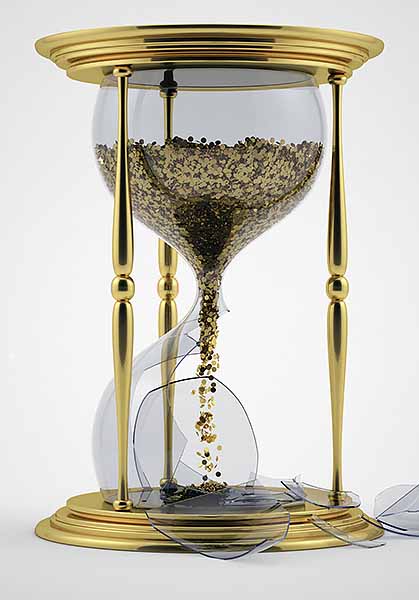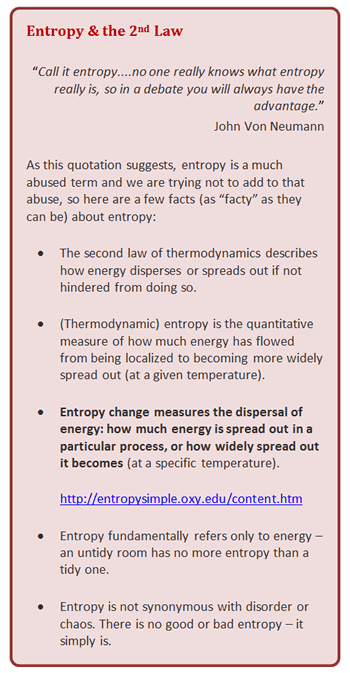Measuring the circular economy
Errors using inadequate data are much less than those using no data at all.
Charles Babbage
The broken hourglass

Do you break the timer when your boiled egg is cooked?
Our economy does, it is like a broken hourglass. We collect together valuable materials, apply energy and labour, put them into products that have yet more added design and brand value and spew them out into the world before starting again (mostly), from scratch.
This of course would all be fine if scarcity was not a problem: if the materials, energy and inputs we rely upon for industrial production were either eternally abundant or safe to distribute and use. However in our current industrial models this is simply not the case.
To pursue the disposable hourglass metaphor, instead of merely turning it over when the sand has run through (a cradle-to-cradle, or circular industrial model), we smash it, buy another hourglass (a cradle-to-grave industrial model) – and maybe pop the old one in the recycling if we’re feeling virtuous.
This is all fine until the raw materials, energy and skills to make more hourglasses start to get scarce or expensive. Then we would have to start to pick over the remains of the broken one to collect these now valuable raw materials for remanufacture and reuse.
How much easier is it to retain the investment that has gone in to making an hourglass than to smash it and start again every time we want to boil an egg?
Measuring the performance of different models
The performance difference between a broken and unbroken hourglass economy is easy to sum up simply – “a lot”. However, in practice more marginal differences can be crucial. A metric would allow us to measure the difference between potential courses of action and help determine the processes and activities most effective in achieving a circular, sustainable economy. But given the complexity of modern industrial processes and the fact that a well-functioning circular economy would add further convolutions, how do we develop a suitable measure?

The common denominator for all industrial activities is energy, therefore a metric which refers to the energetic characteristics of systems and processes is required. We believe this is entropy.
Entropy applies without exception to all activities and processes. Given that universality, it might be used to measure the overall efficiency of our economy and the transition to a circular economy.
Entropy applies primarily to energy and not to matter – something we are fundamentally concerned with in the circular economy. However, matter is of little use until we organise, process, manufacture and distribute it in products and services – all these activities require energy.
We therefore propose the metric of Entropic Overhead.
What is Entropic Overhead?
Entropic Overhead is a relative lifecycle measure of the energetic efficiency of maintaining the utility of a product or service, or reusing its constituent materials.
It can be used to assess the energetic efficiency differences between alternative pathways: for example the energy required to either make a new product or retrieve its resources to original utility, versus the energy that would be spent on retaining the original product’s use. It can also be used to assess the efficiency of alternative uses of constituent resources, beyond the original utility, in different products and processes within a circular economy.
In terms of the hourglass metaphor, it is the energetic performance difference between:
- obtaining a new timer with virgin materials;
- obtaining a new timer and making some further use of the constituent materials of the old one for other purposes;
- remaking the broken timer by retrieving and reprocessing all the constituent materials (and supplementing with new materials where needed), and;
- avoiding breakage and simply turning the hourglass over.
Entropic Overhead is therefore a measure of the differential energy costs we would bear because we failed to make full use of the initial investment we have made in creating a functioning object with long term utility.
Why we need a metric for the circular economy
Humans seek simplicity, and we value simple measures to tell us whether we are moving in the “right” direction and to help assess marginal choices.
However, this desire does cause us problems, such as an over reliance upon metrics that are so abstracted as to be meaningless or even dangerous. GNP was famously condemned by Senator Robert Kennedy as a metric which “measures everything in short except that which is worthwhile”.
The dictum “If you can’t measure it, you can’t manage it” might be trite and one dimensional (and often wrong), but in this case it is useful. How do we measure progress towards a circular economy and, is there one measure, rather than a million, that we can use?
“all models are wrong, but some are useful”
George E. P. Box
Finding a metric that applies everywhere is difficult. In order to do so, we must look to universal principles which apply to all, without exception. The laws of thermodynamics are a good candidate as they represent a fundamental framework for physical existence.
What about zero impact energy and materials?
Entropic Overhead is an ideal measure to indicate the difference between varying production approaches because, in our current unsustainable economy, energy is a useful proxy for environmental efficiency.
However, it would theoretically be possible to have an economy that used only zero impact energy sources and materials. In this utopian situation, Entropic Overhead would be less suited to indicate the sustainability or otherwise of processes.
Therefore the metric is a transitionary one – useful until we achieve a circular economy which uses zero impact energy. Before this occurs, we can rate the Entropic Overhead of different processes using carbon intensity factors to allow for different means of production.
What scale can Entropic Overhead be applied to?
Any scale we like: from a product level, comparing the performance of a leased product to a “disposable” one; to the level of a value chain; for comparing business models, or comparing national & international economies.
Who else has explored this?
“It is not once nor twice but times without number that the same ideas make their appearance in the world.”
Aristotle
Various people have explored the concept of entropy in different fields from economics to social dynamics, including Frederick Soddy in the 1930s and more recently Nicholas Georgescu-Roegen. Many have caught the imagination and many have foundered, possibly because the concept of entropy has been misunderstood or misappropriated – often stretched to apply to social organisation or economics.
However, this doesn’t mean the concept is without value, particularly if we don’t over extend our interpretation of the underlying science. Entropic Overhead is seeking to avoid the pitfalls that misappropriation of the concept can create by focusing upon the fundamental energetics of different industrial and economic processes and not over extending the application of the second law.
Measures that matter
Truly useful measures are required if we are to assess and drive towards a sustainable world. At the physical level, sustainability requires us to find ways to exist and thrive in a system which is closed to matter – though open to energy.
This existential context should define our ways of measuring and managing performance yet we have effectively ignored the reality of life on this planet for too long.
As we start to recognise and push against the hard limits of existence we need measures which tell us, meaningfully, how we are performing and the value of doing so.
Entropic Overhead allows us to measure our progress to a sustainable future, we are keen to join with others to explore its use in practice.
This article was also published by Sustainable Brands on 9/09/13 and by 2degrees on 19/09/13.
We help organisations imagine a brighter, prosperous future.
Contact our sustainability consultants
Hello, Joss.
Thank you for this writeup. I believe Entropic Overhead is a useful –and at the root– concept for understanding and measuring environmental sustainability.
The second law of thermodynamics is considered importantly in The Natural Step systems thinking framework. Are you aware of TNS?
Kind regards,
Miguel
Carpinteria CA USA
Dear Miguel,
Thank you for your positive comment.
We are very aware of TNS – and know that our approaches share a common logic to relate human activities to the frame for physical existence – the laws of thermodynamics.
In addition, I have (in my previous life with WWF in the UK) worked as a partner with TNS UK, beginning in 1999.
One publication I was involved with which integrated the TNS framework developed a common framework for professional education in sustainability. Published in 2000, the document can be seen here. See the back page for how we integrated the TNS framework.
Thanks again.
Best regards,
Joss
Hi Joss,
Good to see considerations of this nature are being investigated. Metrics that capture the physical realities of systems will be of significant value in linking impacts to the short term and providing tangible insight when it comes to making ‘sustainability’ considerations. The second law of thermo-dynamics is fundamental to this pursuit, with all activities we undertake increasing entropy and taking energy from higher concentrations to lower. A metric that considers the thermodynamic limits imposed by energy growth would be an interesting one. Exploring ways we can measure and minimise our exploitation of energy is an exciting prospect. Opportunities to reuse low-grade, high entropy energy for work at a low thermodynamic efficiency should be explored (I assume this is probably being done).
I look forward to the progression of your work.
Best regards,
Ben Hawthorn
Dear Ben,
Thank you very much for your comments, much appreciated.
As you say, there is an increasingly pressing need to be focussing upon and aligning production and economic systems with the way that physical “reality” works – we have talked about the wider 4 laws context here.
You are absolutely right about the energy dimension, we have and are working on a companion concept to Entropic Overhead. This should be published soon!
Best regards,
Joss